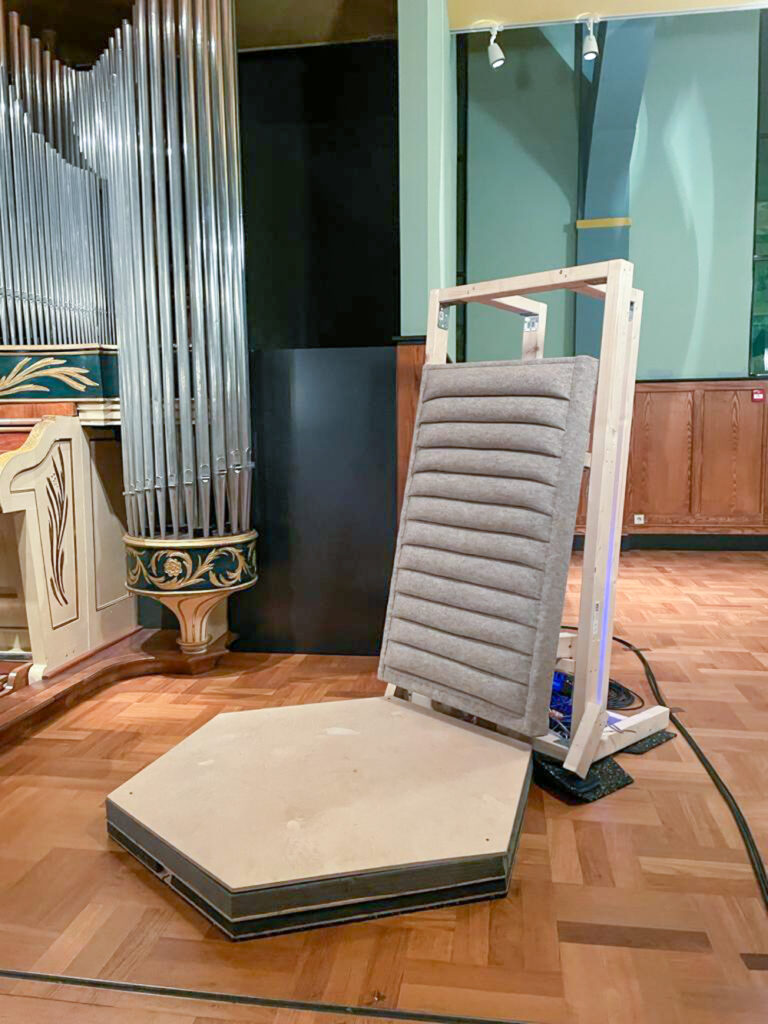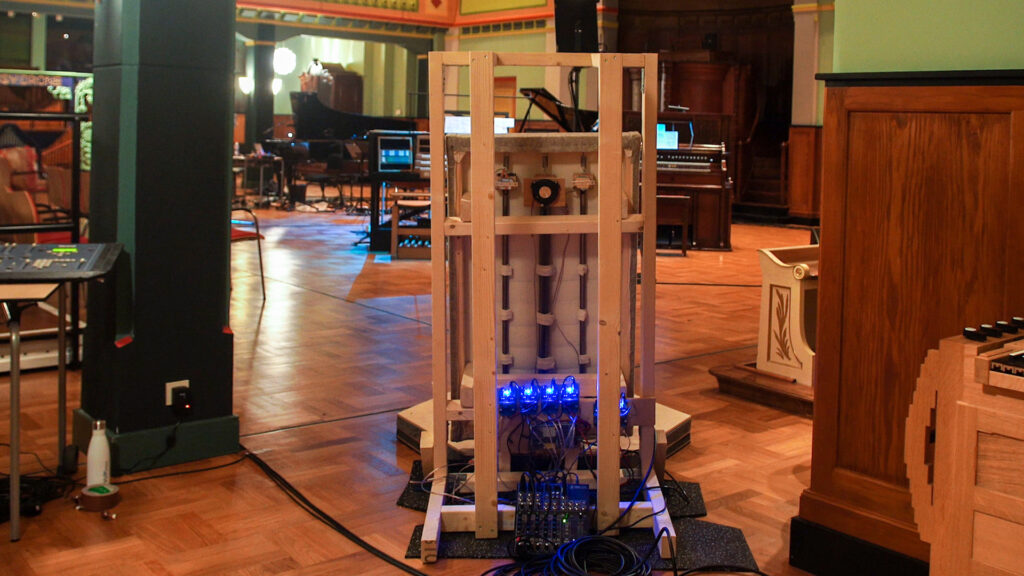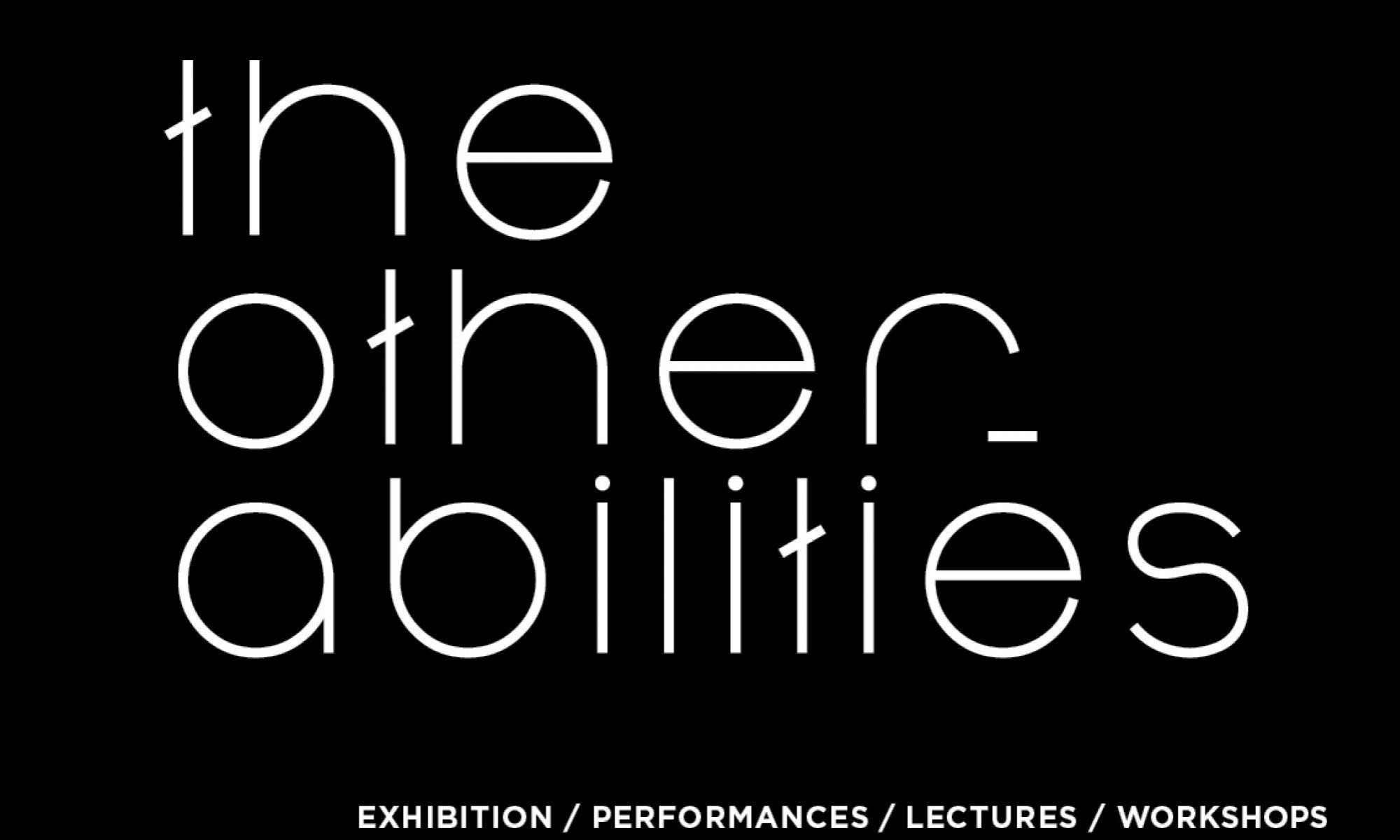
DIMENSIONS
Hexagon Diameter 120cm,1/2 hexagon cut in the middle between angle to angle and 1/2 hexagon cut in the middle between side to side. The thickness 11 cm.
MATERIALS
Per tile: 4 Woojer speakers, acoustic foam plates of different density and thickness, rubber plates, wooden plates of different thickness, electronics
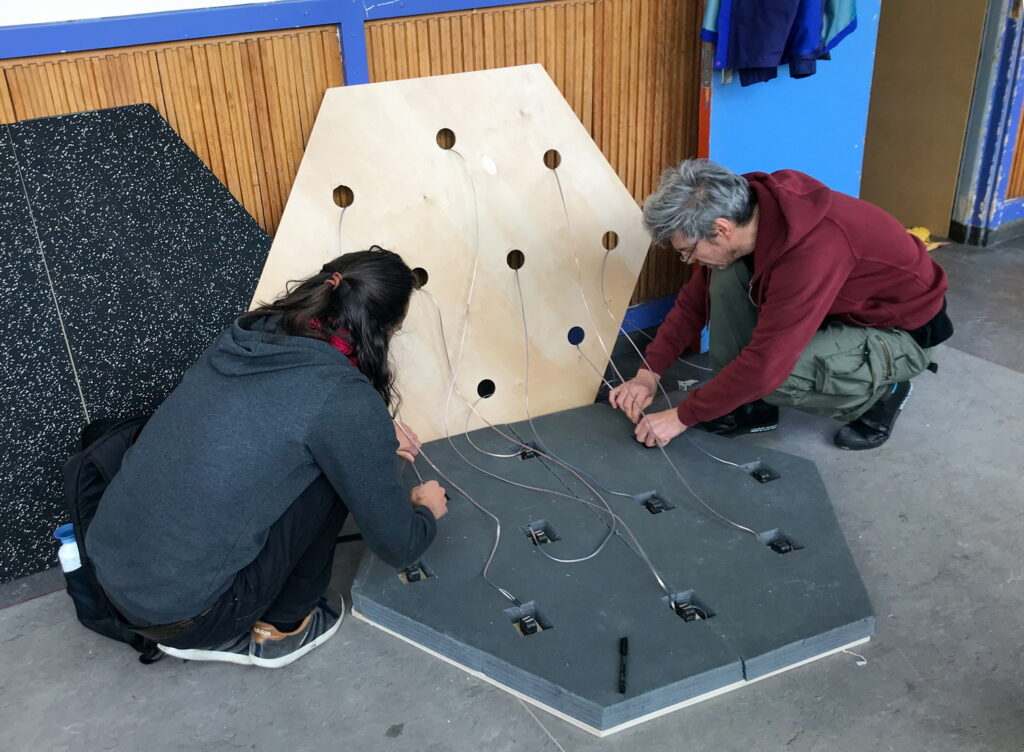
HOW IS THE PROTOTYPE MADE?
The objective is to create a large floor surface that turns sound information into tactile sensations that can be distinguished between a number of aspects of sound including harmony, tonation, density, etc. In order to be adaptable to spaces of varying shape and size, it has a modular design consisting of interlocking tiles with a few different shapes. Each individual tile should comprise a large enough surface such that any standing or sitting person, including wheelchair users, is offered ample private space to comfortably stand or sit on. Hence each tile has fairly large dimensions and is constructed strongly enough to hold heavy weight.
We created 3 shapes: a full hexagon with an external diameter of 120 cm and 2 versions of half hexagons. Combining these shapes it is possible to create a flat continuous wooden surface with straight, or stepwise, sides at a variety of angles.
The floor tiles have a ‘sandwich’ construction: (from bottom to top) rubber, wooden plate, hard foam, wooden plate, softer foam, wooden plate. Each full hexagon tile has 4 embedded tactile speakers (Woojer) attached to the top wooden plate in 4 locations; in the center of each ¼ hexagon.
The four speakers allow for a max of 4 sound inputs.
The speaker cables are embedded in tunnels in the hard foam layer. These tunnels connect on the edges, allowing the cabling to pass invisibly throughout the entire structure.
HOW IS THE PROTOTYPE USED?
A floor is a fundamental element of an architectural space and offers people the options to walk, sit or lie down. This floor tile was the first prototype created in this research and it served as an initial experimentation vehicle to explore certain questions: e.g., is it possible to experience directionality of sound or indicate surrounding sound through tactility?
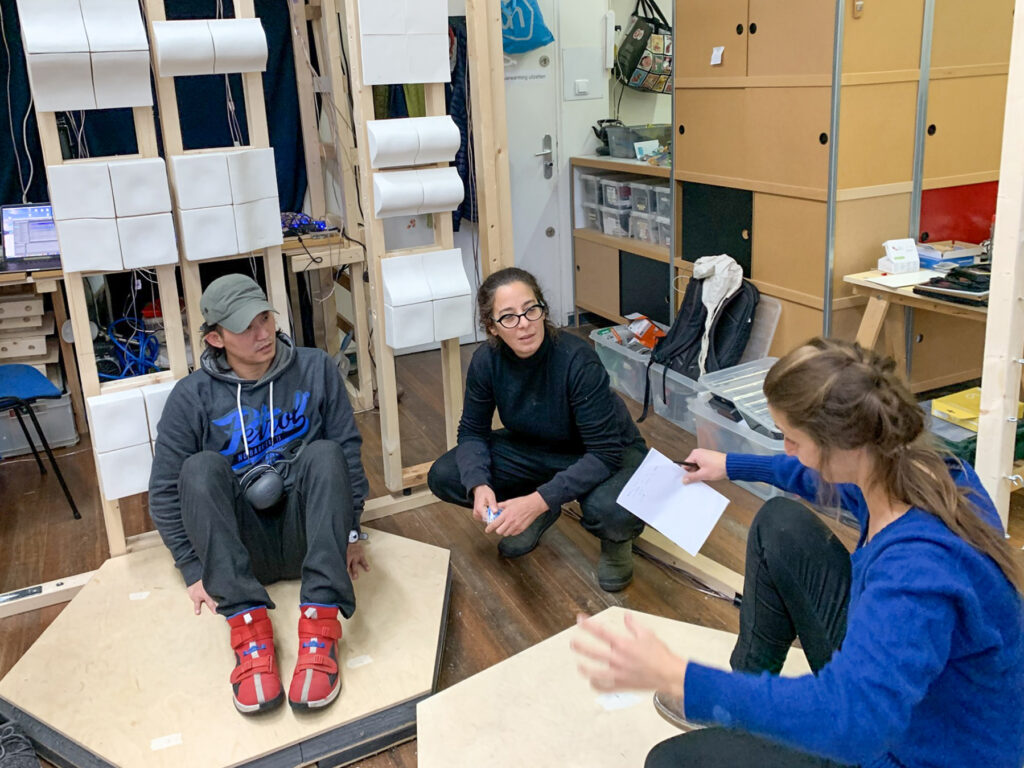
Is it possible, by means of the spatial distribution of the four speakers, to create some kind of “sound landscape” where the body passes through different vibrations while walking in space?
Can we use this “landscape” to create some kind of storytelling in space? Could it be possible to feel complex sensations from a few sources at the same time, such as voice, noise, melody, harmony?
The speakers can be used in several ways: all speakers in a floor tile can play the same sound in unison, they can be split 2 x 2 for left and right stereo pairing, or 4 separate audio/vibration channels can be controlled to create a “drawing in space”.
It is possible to use a single floor tile alone or to create a floor made of several tiles. Moreover, the floor tiles can be experienced in combination with other prototypes. A person can sit or stand on a floor tile while leaning against a different prototype. This leads to new questions such as: What is the effect upon tactile sensation when the audience is in contact with different types of surfaces?
